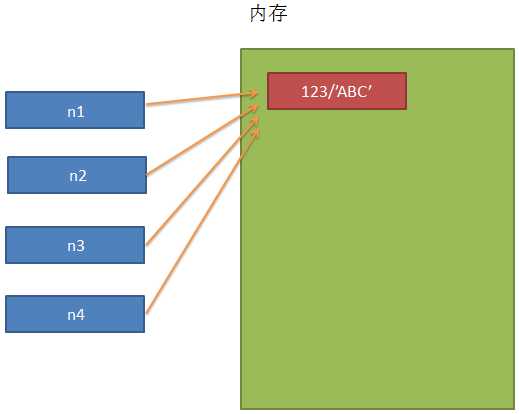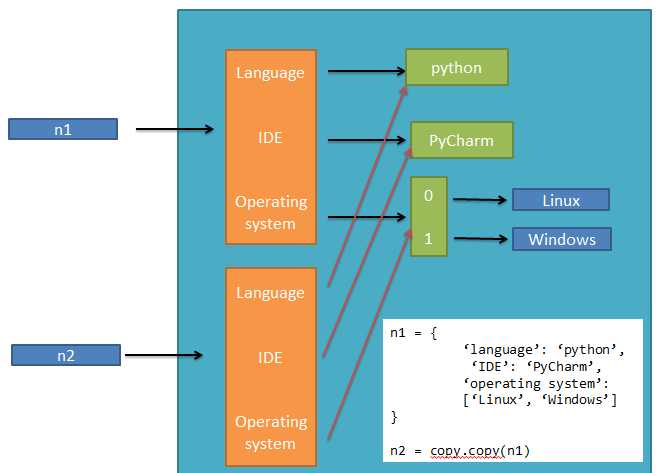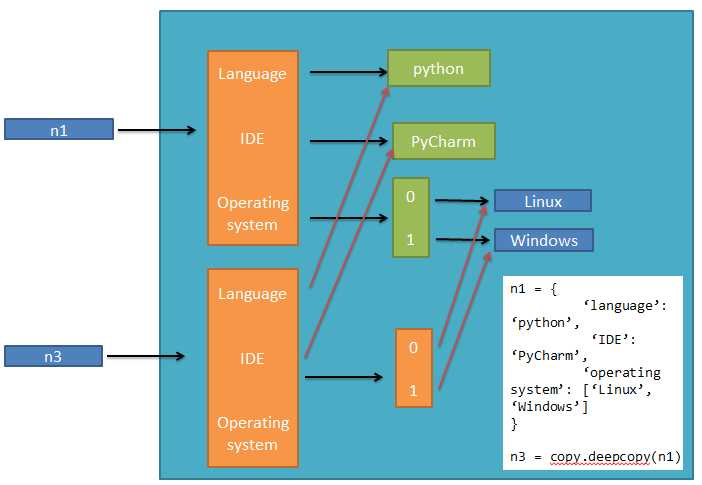标签:
set - unordered collections of unique elements
# create a new set set1 = {1,2,3} print(type(set1)) # result => <class ‘set> set2 = set() print(type(set2)) # create an empty set, result => <class ‘set‘> # as the object is iterable, we can create a set with list, tuple, dictionary etc. list1 = [1, 2, 3] set2 = set(list1) print(set2, type(set2)) # {1, 2, 3} <class ‘set‘> tuple1 = (1, 2, 3) set2 = set(tuple1) print(set2, type(set2)) # {1, 2, 3} <class ‘set‘> dict1 = {‘k1‘:1, ‘k2‘:2} set2 = set(dict1) print(set2, type(set2)) # {‘k1‘, ‘k2‘} <class ‘set‘> # check if below is workable to create an empty set set3 = {} print(type(set3)) # type result => <class ‘dict‘> Failed # so the variable_name = {} only works for creating a new dictionary
set在爬虫领域应用较多,比如有很多待爬取的网页,每爬取一个新网页就添加到数据中,如果在数据里已经存在这个网页,就不爬取。
set的功能:
# to add a new element, we can use add() # as set only contains different elements, if we add the same element multiple times, only one will remain set1 = {1, 2, 3, } set1.add(4) set1.add(4) set1.add(4) print(set1) # result => {1, 2, 3, 4} # to clear a set set1.clear() print(set1) # => set() # a.difference(b), elements in a but not in b set1 = {1, 2, 3, 5, 8, } set2 = {0, 1, 2, 3, } ret1 = set1.difference(set2) print(ret1) # => {8, 5} ret2 = set2.difference(set1) print(ret2) # => {0} # difference() function does not change the set, if we want to change it, we can use difference_update() set0 = {-1, } set0.difference_update(set2) print(set0) # discard() to remove an element, if not a member, do nothing set0 = {1, 2, 3, } set0.discard(1) print(set0) set0.discard(-1) print(set0) # both print out: {2, 3}, no error msg # if we use remove(), when the target element is not a member, there‘ll be error # set0.remove(-1) # print(set0) ‘‘‘ Traceback (most recent call last): set() File "D:/NaomiPyer/1016/1017_set_functions.py", line 44, in <module> {8, 5} set0.remove(-1) {0} KeyError: -1 ‘‘‘ # intersection(), gets the shared info set1 = {1, 2, 3, 5, 8, } set2 = {0, 1, 2, 3, } ret3 = set1.intersection(set2) print(ret3) # => {1, 2, 3} # a.intersection_update(b) update a with the intersection of a and b set1 = {1, 2, 3, 5, 8, } set2 = {0, 1, 2, 3, } set1.intersection_update(set2) print(set1) # => {1, 2, 3, } # isdisjoint() returns True if two sets has no intersection set1 = {1, 2, 3, } set2 = {0, } ret1 = set1.isdisjoint(set2) print(ret1) # => True set1 = {1, 2, 3, } set2 = {1, } ret1 = set1.isdisjoint(set2) print(ret1) # => False # issubset() report whether another set contains this set set1 = {1, } set2 = {0, 1, 2, 3, } ret1 = set1.issubset(set2) print(ret1) # => True, set1 is the subset of set2 # issuperset() is the opposite ret1 = set1.issuperset(set2) ret2 = set2.issuperset(set1) print(ret1) # False print(ret2) # True # pop() remove and return an arbitrary set element. # raises keyError if the set is empty set1 = {1, 2, 3, 4, 6, } ret1 = set1.pop() print(set1) # => {2, 3, 4, 6} print(ret1) # => 1 set1 = set() ret1 = set1.pop() print(set1) print(ret1) # KeyError: ‘pop from an empty set‘ - like remove(), raises KeyError # symmetric_difference() # returns the symmetric difference of two sets as a new one set1 = {0, 1, 2, } set2 = {-1, 0, 3} ret1 = set1.symmetric_difference(set2) print(ret1) # => {1, 2, 3, -1} # symmetric_difference_update() # update set1 with the result set1 = {0, 1, 2, } set2 = {-1, 0, 3} set1.symmetric_difference_update(set2) print(set1) # => {1, 2, 3, -1} # union() returns the union of sets as a new set set1 = {0, 1, 2, } set2 = {-1, 0, 3} ret1 = set1.union(set2) print(ret1) # => {0, 1, 2, 3, -1} # update() updates the set with the union of itself and the other set set1 = {0, 1, 2, } set2 = {-1, 0, 3} set1.update(set2) print(set1) # => {0, 1, 2, 3, -1}

关于set的方法,intersection()即为两个set的交集,difference()为补集,union() 为并集。
方法里有update的,即为在原set上直接更新。
if condition:
block1
else:
block2
name = value1 if condition else: value2
name = if condition? value1: value2
str 一次性创建后,不能被修改,数据修改其实是要再次创建的
list 链表创建后会指定下一个元素的位置
int 和 str 的赋值,copy和deepcopy,他们所指向的都是同一内存地址
import copy
n1 = 123
n2 = n1
n3 = copy.copy(n1)
n4 = copy.deepcopy(n2)

对于其他的数据类型如list, tuple, dict, set 等,在copy的时候,内存地址是不一样的
1. 赋值
创建一个变量,变量指向原内存地址
2. 浅copy 和 深copy
浅copy 在内存中只额外创建第一层数据
deepcopy 是除了最后一层,都创建了一次
1 import copy 2 3 4 n1 = n1 = { 5 ‘language‘: ‘python‘, 6 ‘IDE‘: ‘PyCharm‘, 7 ‘operating system‘: [‘Linux‘, ‘Windows‘] 8 } 9 10 n2 = copy.copy(n1) 11 n3 = copy.deepcopy(n1) 12 13 print(id(n1)) # 1195332519496 14 print(id(n2)) # 1195332981832 15 print(id(n3)) # 1195332937352 16 # all id()‘s are different
对比copy和deepcopy的指向


【Python全栈笔记】03 [模块二] 16-17 Oct Set 集合,三目运算
标签:
原文地址:http://www.cnblogs.com/doble-bern/p/5971349.html